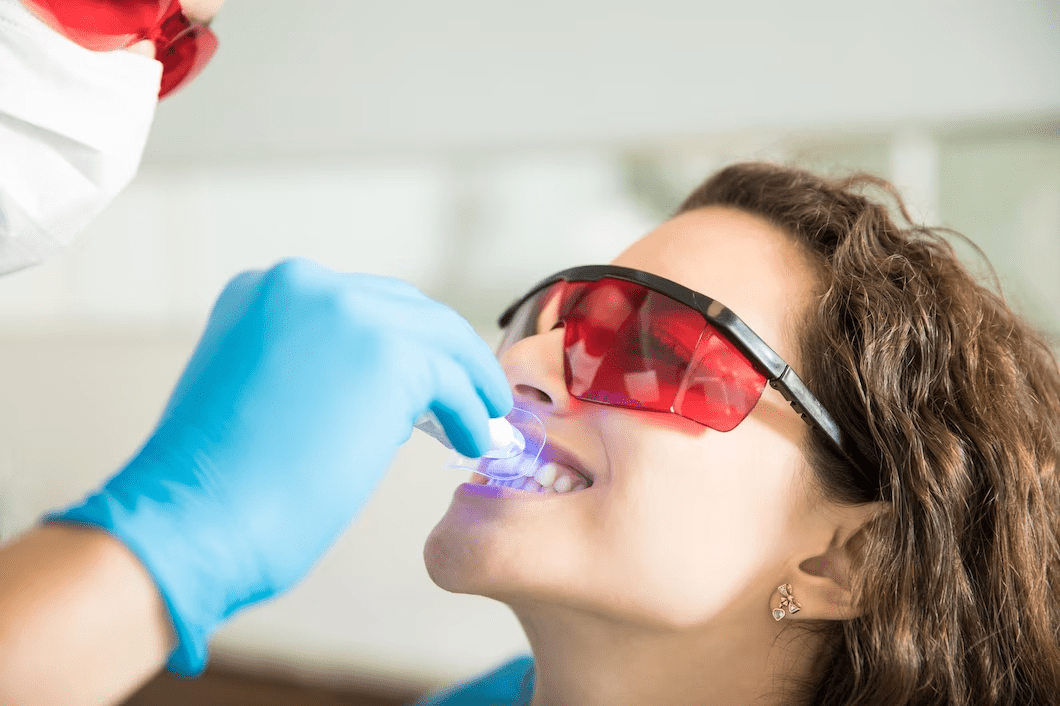Shopping cart
Subscribe to out newsletter today to receive latest news administrate cost effective for tactical data.
2478 Street City Ohio 90255
- Phone: 77 999 833 20
- Email: info@tinypearls.in
Subscribe to out newsletter today to receive latest news administrate cost effective for tactical data.
2478 Street City Ohio 90255
LASER Dentistry refers to the use of LASER (Light Amplification by Stimulated Emission of Radiation) technology in the diagnosis and treatment of dental conditions. Unlike traditional drills and blades, LASER devices use focused beams of light to precisely cut, shape, or remove tissue with minimal discomfort. In dentistry, LASERs are broadly classified into two categories: soft tissue LASERs (used for gums, tongue, and oral mucosa) and hard tissue LASERs (used for teeth and bone).
The technology is applied across multiple areas of dentistry, such as cavity removal, gum reshaping, teeth whitening, treatment of oral lesions, and even assisting in implant surgeries. The appeal of LASER Dentistry lies in its precision, reduced pain, faster healing, and minimally invasive nature. For many patients, it eliminates the fear associated with traditional dental tools.


LASER Dentistry covers a wide spectrum of procedures. Some common applications include
LASERs can detect early-stage cavities before they appear on X-rays. When treating decay, LASERs remove diseased tissue while preserving more of the healthy tooth structure.
Periodontal therapy with LASERs involves removing infected tissue and sterilizing gum pockets. This reduces the need for sutures and speeds up healing
Whitening gels activated by LASER energy accelerate the bleaching process, giving patients visibly whiter teeth in a single session.
LASERs are used for frenectomy (removal of tongue-tie), treating gummy smiles, removing excess gum tissue, and biopsies of suspicious lesions.
LASERs assist in sterilizing the root canal system, ensuring deep disinfection that reduces the risk of reinfection.
Recurrent ulcers, cold sores, and other lesions can be treated effectively, often with instant pain relief and faster recovery.
LASERs are used for precise incisions, exposure of implants, and even bone recontouring in certain cases.
By combining versatility with patient comfort, LASER Dentistry has become a cornerstone of modern dental practice.
The key reason patients prefer LASER Dentistry is comfort and efficiency. Unlike conventional methods that may require anesthesia, LASER procedures are often painless and bloodless, significantly reducing chair time. For instance, gum reshaping with a LASER causes less bleeding, less swelling, and faster healing compared to scalpel-based surgery.
Another major advantage is precision. LASER beams can target specific tissues without affecting surrounding structures, making treatments safer and more predictable. In procedures like cavity preparation, LASERs remove decayed tooth material without the vibration or heat associated with dental drills.
Additionally, LASERs sterilize as they work, minimizing bacterial infections—a significant benefit for periodontal therapy and oral surgeries. Patients also experience reduced postoperative discomfort, meaning fewer painkillers and shorter recovery times.
Like every innovation, LASER Dentistry is surrounded by myths that may prevent patients from exploring its benefits. Let’s address a few common ones:
By separating fact from fiction, patients can feel more confident about opting for LASER-assisted procedures.
LASER Dentistry is not just a technological upgrade; it represents a new era in patient-centered care. With its ability to minimize pain, reduce anxiety, and improve healing outcomes, it is reshaping how dental treatments are delivered. For patients who fear drills, needles, or prolonged recoveries, LASERs offer an inviting alternative.As technology continues to advance, the role of LASERs in dentistry will only expand—bringing even greater precision and patient comfort. Choosing LASER Dentistry means choosing modern, gentle, and effective care for your oral health.